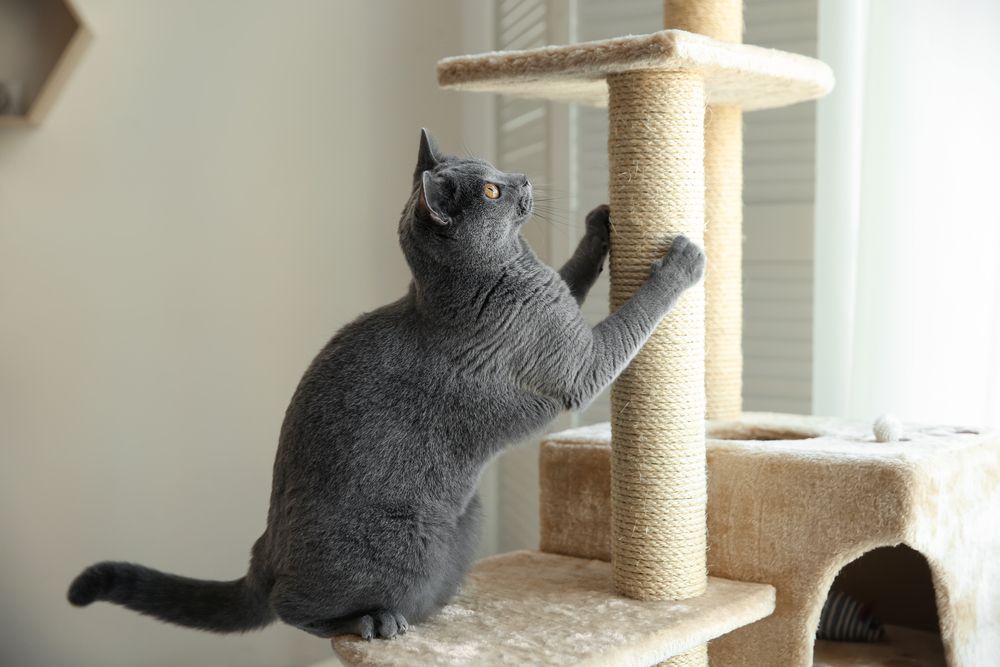Cats are lovable companions, but their instinctive need to scratch can pose a constant battle for homeowners hoping to preserve couches, chairs, and other household items. Rather than trying (and often failing) to stop the behavior entirely, a more effective approach is to redirect it onto designated cat scratchers. The right scratcher not only saves your furniture from shredded upholstery but also provides mental and physical enrichment for your feline friend.
1. Why Cats Scratch in the First Place
Scratching isn’t a “bad habit” but a natural part of being a cat. It’s how felines mark territory with scent glands in their paws, stretch muscles, shed old claw sheaths, and relieve stress or boredom. Punishing a cat for scratching is counterproductive—ensuring they have valid outlets for this behavior is essential.
Key Functions of Scratching
- Marking Territory: Cats leave visual and scent clues behind, signaling their presence.
- Maintaining Claw Health: Stripping away old claw sheaths and sharpening new growth.
- Physical and Mental Exercise: Stretching back and shoulder muscles, channeling pent-up energy.
- Stress Relief: Some cats scratch more when anxious or uncertain, using it to self-soothe.
2. Types of Cat Scratchers
Not all scratchers are the same. Cats differ in their preferred angles, materials, and textures for scratching. Observing your cat’s scratching style (horizontal vs. vertical, carpet vs. sisal) helps you pick a scratcher they’ll actually use.
Common Scratchers
- Vertical Scratch Posts
- Features: Tall posts wrapped in sisal rope or carpet. The height allows cats to stretch fully. Stability is key—if it wobbles, they might avoid it.
- Who It’s For: Cats that like standing on hind legs, clawing upwards on furniture or drapes.
- Horizontal or Incline Scratchers
- Features: Cardboard or carpeted mats, sometimes angled. Placed on the floor.
- Who It’s For: Cats that like clawing rugs or couch arms horizontally.
- Cat Trees and Condos
- Features: Multi-level structures often include built-in scratching posts. Provide climbing, perching, and hiding spots in addition to scratch surfaces.
- Who It’s For: Multi-purpose for cats needing climbing and vantage points, plus scratch outlets.
- Scratching Lounges
- Features: Large, contoured cardboard designs that double as resting surfaces.
- Who It’s For: Cats seeking comfort, able to scratch or lounge simultaneously.
3. Important Features and Materials
A scratcher’s durability, texture, and stability can influence how appealing it is to your cat. If it’s flimsy or the wrong fabric, your cat might ignore it and return to the couch.
What to Look For
- Material:
- Sisal Rope or Sisal Fabric: Generally long-lasting, favored by many cats. Sisal fabric is softer and more uniform; sisal rope’s ridges can provide interesting texture.
- Corrugated Cardboard: Affordable, cats love the texture, but not always as durable—though replacements can be cheap.
- Carpet: Some cats like it, but it may confuse them if they also see household carpets as fair game.
- Stability:
- Wobbly posts put cats off. Choose something with a heavy base or a stable anchor.
- For wall-mounted scratchers, ensure secure mounting so it doesn’t shift.
- Height/Size:
- Vertical posts should allow a full-body stretch, ideally around 30 inches or more.
- For horizontal scratchers, enough surface area so your cat can comfortably sprawl.
- Additional Elements:
- Toys attached (like dangling balls) can entice some cats, but not necessary if the scratcher alone is appealing.
- Catnip pockets or catnip-infused surfaces can draw initial interest.

4. Placement and Encouragement
Even the best scratcher won’t help if it’s tucked away in a seldom-used corner. Cats scratch in areas where they spend time or want to mark territory. Strategic placement can make the difference between success and neglected scratchers.
Tips
- Place Near Problem Spots: If your cat is scratching the couch, position a scratch post nearby to redirect behavior. Gradually move it to a more suitable location if needed.
- High-Traffic Zones: Cats like to mark areas of significance—like near windows or doorways. Having a scratcher in a visible, commonly used area can align with their instincts.
- Catnip or Treats: Rubbing or sprinkling catnip on the scratcher can entice them to investigate and scratch. Reward them with praise or a treat when they use it.
5. Training and Positive Reinforcement
Cats don’t automatically shift to a new scratcher just because it’s there. Some training can help them realize it’s a superior option compared to your furniture.
Methods
- Redirect: Each time you catch your cat clawing an off-limits surface, gently move them to the scratcher. Reward them if they scratch there.
- No Punishment: Don’t yell or punish—this can create fear or anxiety, leading to hidden destructive scratching.
- Consistency: The more consistent you are—praising good behavior and redirecting negative—the faster they’ll learn.
- Protective Measures: Temporarily using double-sided tape or covers on your couch can deter scratching, making the scratcher the more appealing surface.
6. Budget and Durability
Scratchers range from simple cardboard pads under $10 to elaborate cat trees costing hundreds. You want a product that stands the test of time—especially if your cat is aggressive with claws—and fits your aesthetic and budget.
Considerations
- Replacement Options: Cardboard styles may require frequent replacement if your cat loves them. Some come with refillable inserts.
- Long-Term Value: A pricier but sturdier sisal post might last years, saving money over multiple cheaper throwaways.
- Multiple Cats: If you have several cats, consider multiple scratchers or larger cat trees to minimize competition and wear.
7. Rotating and Refreshing Scratchers
Over months of heavy use, scratchers can become heavily worn or lose their catnip luster. Periodically refreshing or rearranging them can keep your cat’s interest.
Suggestions
- Rotation: If you have multiple scratchers, rotate them out occasionally or relocate them in the home for renewed novelty.
- Catnip Sprays: Re-apply catnip or cat-attract sprays if your cat responds to them, reigniting interest in a battered scratch post.
- Maintenance: For sisal-wrapped posts, sometimes rotating the rope or trimming frayed strands can extend life.
Protecting your furniture and embracing your cat’s natural scratching instinct starts with choosing the right scratcher. Observing your cat’s scratching style—vertical vs. horizontal, or preferences for certain textures—guides you to the best design. Make sure the scratcher is sturdy, sized properly, and placed in a spot your cat frequents. Then, encourage usage with catnip, positive reinforcement, and consistent redirection from no-go surfaces.
Over time, you may experiment with multiple scratchers: a vertical sisal post, a cardboard lounge, or a cat tree with integrated scratching surfaces. Regular maintenance and occasionally refreshing the scratcher’s appeal keep your cat engaged. By accommodating your feline friend’s scratching habits with suitable, well-placed scratchers, you protect couches and chairs while allowing your cat to happily do what comes naturally—keeping both kitty and your home in harmony.



